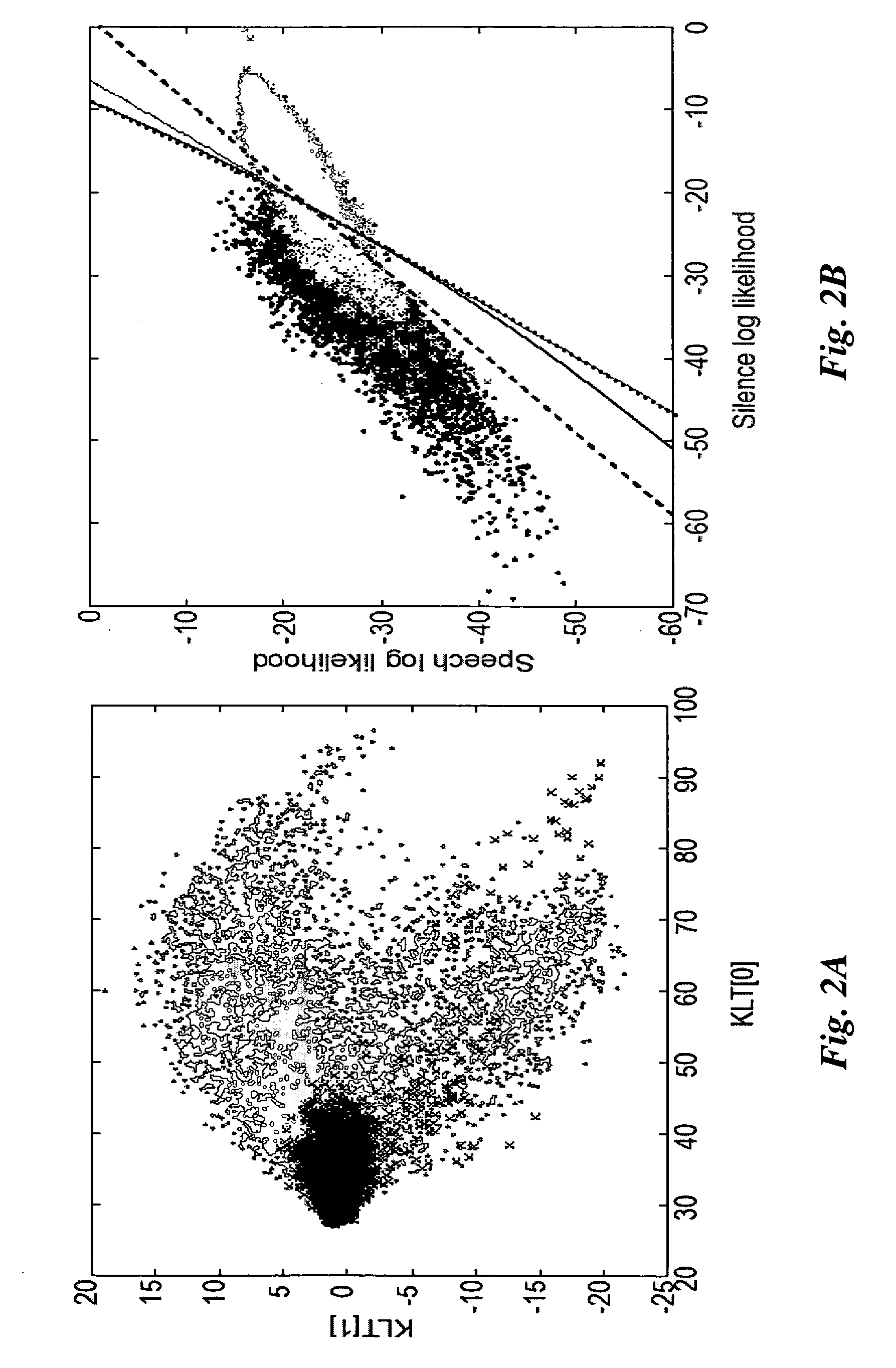Classification in likelihood spaces
- Summary
- Abstract
- Description
- Claims
- Application Information
AI Technical Summary
Benefits of technology
Problems solved by technology
Method used
Image
Examples
Embodiment Construction
[0028] As shown in FIG. 1, our invention distinguishes two computational spaces. The space in which actual observations, measured signals, or original data reside is called the data space 101. There, the computed 110 corresponding class-conditional probability distributions 102 are treated as facilitators for estimating a posteriori class probabilities to be used for Bayesian minimum error or minimum risk classification.
[0029] We treat the class-conditional probability distributions as facilitators for non-linear projections 120, which we call likelihood projections, into a likelihood space 103. The coordinates of the likelihood space are the class-conditional likelihoods of the original data for the various classes. In this space, the Bayesian classifier between any pair of classes in the data space can be viewed, for example, as a linear discriminant of unit slope with respect to the axes representing the two classes. The key advantage to be derived from working in the likelihood...
PUM
 Login to View More
Login to View More Abstract
Description
Claims
Application Information
 Login to View More
Login to View More - R&D
- Intellectual Property
- Life Sciences
- Materials
- Tech Scout
- Unparalleled Data Quality
- Higher Quality Content
- 60% Fewer Hallucinations
Browse by: Latest US Patents, China's latest patents, Technical Efficacy Thesaurus, Application Domain, Technology Topic, Popular Technical Reports.
© 2025 PatSnap. All rights reserved.Legal|Privacy policy|Modern Slavery Act Transparency Statement|Sitemap|About US| Contact US: help@patsnap.com



